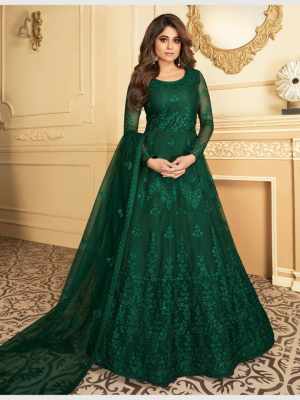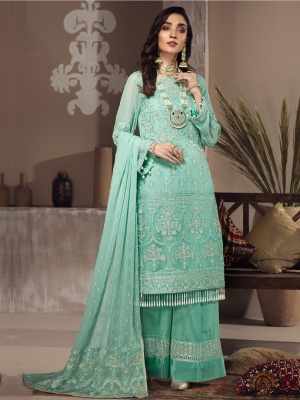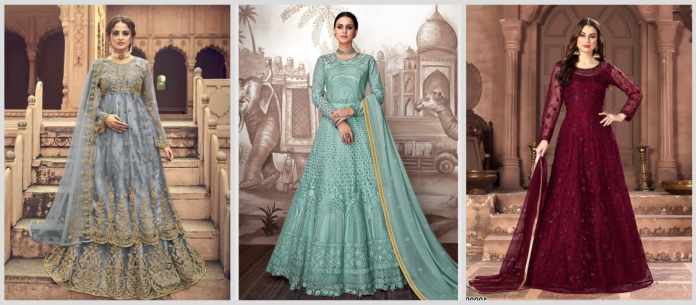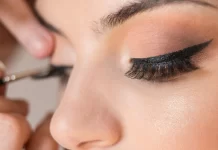Indian dresses are popular traditional outfits in Asia and other parts of the world. Here is everything you need to know about Indian dresses.
Introduction
Indian outfits have taken center stage in the fashion industry in recent years. The outfits have been coming in and out of fashion on the global stage, but they still have a space and are liked by many men and women worldwide. Indian dresses have undergone improvements over time to suit today’s fashion and wearer’s requirements. Additionally, they are fused with western and other fashions to come up with elegant unique designs. Keep reading to learn more about Indian dresses.
Fabrics if Indian Dresses
Indian dresses are made using different fabrics. Older attires were made using cotton and silk textiles. But in today’s fashion, a wide range of materials are used. Chiffon, georgette, raw silk, crepe, brocade, linen, net, velvet, and more are used to make quality Indian dresses. Some of the fabrics are lightweight, like crepe and chiffon, while others are heavy, like velvet and brocade. It is also worth noting that these traditional attires are available at different prices tags depending on fabrics used and design. Also, fabric determines the comfort and durability of an Indian dress.

Types of Indian Dresses
There are different types of Indian dresses for both men and women. Here are some of the popular Indian dresses you can get on the market:
- Saree
Saree is one of the oldest Indian dresses with a rich history. The attire came into existence in 2000 BC during the Indus Valley Civilization. Saree, also known as Shari or Sari, is 5.5 meters to 8 meters long and around 1 or more meters wide. It is unstitched and draped around the woman’s waist in layers, and the other part goes over the shoulders, covering the chest section. It leaves the midriff area uncovered. The attire should be worn with a petticoat and blouse. One may also wear a dupatta to cover the head and other parts they don’t want to reveal. You should research more on how to drape the saree.
- Lehenga Choli
This is another unique Indian ethnic attire that is liked by women of all ages. The attire is a three-piece Indian outfit comprising a lehenga (a long flared skirt), a choli (blouse), and a dupatta (shawl-like scarf). The attire is preferred by brides on their wedding days. It is also suitable for attending special occasions and festivals.
- Salwar kameez
Salwar Kameez is a beautiful Indian outfit with beautiful embellishments and print patterns. The attire comprises a salwar and a tunic top. The salwar is a pair of trousers that is tight at the waist and ankles. But today you can choose to wear a palazzo or churidaar instead of a salwar. The kameez (tunic top) can have beautiful patterns and embroidery work. You can complete the attire with a veil or dupatta. This outfit is suitable for weddings, parties, office wear, and any event.
- Anarkali suit
This is a long dress-like shirt with slim bottoms. The attire varies in length as some might touch the floor while others reach the ankles. The Indian attire can be worn with a churidar. This outfit can be worn at traditional festivals, family get-togethers, annual religious celebrations, and other cultural-related events.
- Sherwani
This is a long jacket or coat with exposed buttons from top to bottom of the jacket. It reaches just below the knee. The coat is paired with a churidar. Grooms mainly wear it.
- Dhoti
This is the national dress of India. It is a long cotton dress, around 4 to 6 feet long, mainly worn by men in the villages. Once you put it on, you just need to hold it in place using a belt around the waist. It is an everyday wear for Indians.
When and Where to Wear Indian Dresses?
You can wear Indian dresses at anytime, anywhere. These outfits are accepted in all parts of the world, and you should not be afraid to showcase your Indian culture and fashion. The traditional outfits are ideal for traditional weddings, festivals, parties, formal gatherings, and special occasions. You just need to choose what is suitable for the occasion, and you will be good to go.
Where to Buy Indian Dresses?
You can buy Indian dresses at the local boutique. Most stocked boutiques offer salwar kameez, lehengas, sarees, and other outfits at pocket-friendly prices. Alternatively, you can buy the traditional attires online. Many online boutiques and brands offer these Indian dresses and will ship the outfits to your location.

Indian Dresses History
The history of Indian dresses can be traced back to 2000 BC during the Indus Valley Civilization. During this period, people used to spin, weave and dye cotton textiles to make beautiful garments that wear draped around the waist and body. The cotton industry experienced significant growth, and new stitching and weaving techniques emerged, some of which still survive today.
The growth of the textile industry continued and during the Maurya and the Gupta period, people were now familiar with both stitched and unstitched Indian attires. The main attire worn at this time was anariya which was tied around the waist by a sash.
Trade also played a significant role in the development of Indian clothing industry. New trade routes allowed the Chinese to introduce silk textiles, while the Romans brought in Indigo for textile dyeing. Additionally, the Mughal helped the country to develop exceptional textile-making and dyeing techniques like kalamkari, resist dyeing, and mordant dyeing. Then the modern trading with Southeast Asia, Europe, China, the Roman Empire, the Arabs, and other merchants lead to the spread and recognition of Indian dresses worldwide.
Final Words
Indian dresses, ranging from salwar kameez to sarees, are popular outfits you should buy. The attires are not just for Asians. People from other states and cultures wear them. So if you want to try something new with an ethnic touch, consider these attires. Please note that the outfits can be fused with western and other fashions. For instance, you can wear salwar or churidaar with a crop top. Therefore, add more Indian outfits to your wardrobe, and you will have more options whenever you want to look unique.
















